Modern transport infrastructure and Red history also helping Hunan develop economic growth
 An overhead view of the lush peaks at Zhangjiajie National Forest Park. (WU YONGBING / FOR CHINA DAILY)
An overhead view of the lush peaks at Zhangjiajie National Forest Park. (WU YONGBING / FOR CHINA DAILY)
Boasting a diverse landscape, scenic spots and long-standing culture and history, Hunan province in Central China has spared no effort to develop its cultural and tourism industry over the past 10 years.
With the rise of a batch of cultural and tourism projects and services such as the Hunan Museum, Chengtoushan National Archaeological Site Park and Phoenix Ancient Town, the province is paving the way to construct more tourism attractions. Along with the construction of high-speed railways and tourism facilities around scenic spots, such as Dongting Lake and Luoxiao Mountain, tourists are enjoying easier access to the famed mountains and waters in the province.
 Visitors tour the former residence of late Chinese leader Mao Zedong in Shaoshan of Xiangtan, Hunan province. (PHOTO PROVIDED TO CHINA DAILY)
Visitors tour the former residence of late Chinese leader Mao Zedong in Shaoshan of Xiangtan, Hunan province. (PHOTO PROVIDED TO CHINA DAILY)
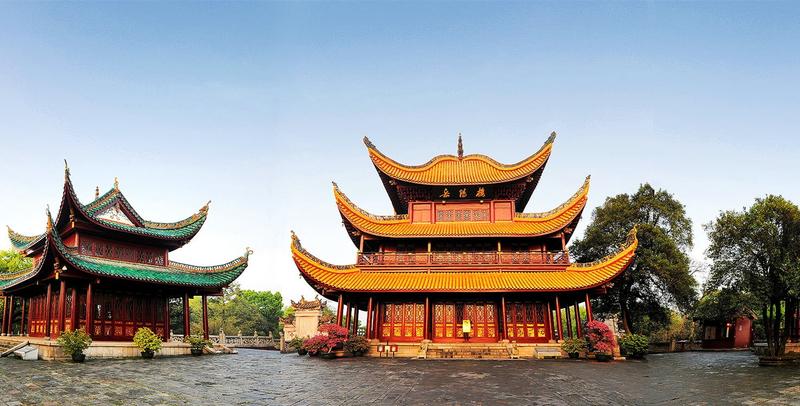 A view of Yueyang Tower in Hunan. (PHOTO PROVIDED TO CHINA DAILY)
A view of Yueyang Tower in Hunan. (PHOTO PROVIDED TO CHINA DAILY)
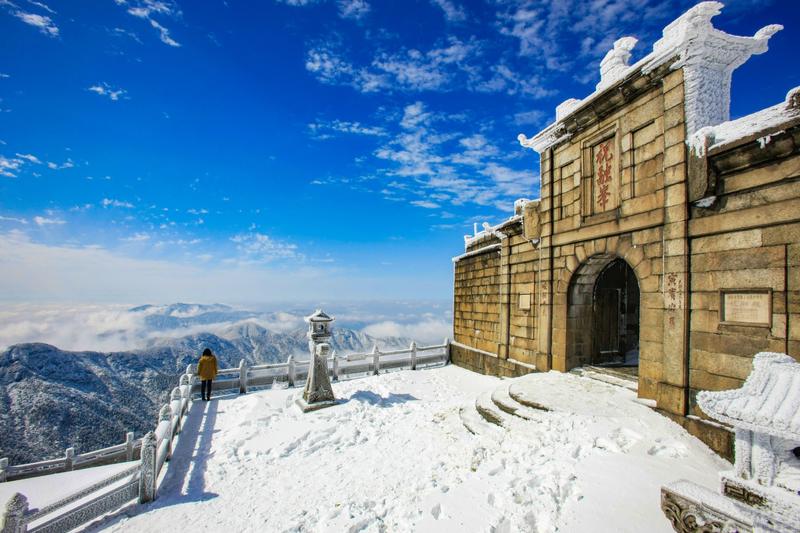 A tourist enjoys the snowy scene on the Zhurong Peak of Hengshan Mountain in Hengyang. (LIU JIANPING / FOR CHINA DAILY)
A tourist enjoys the snowy scene on the Zhurong Peak of Hengshan Mountain in Hengyang. (LIU JIANPING / FOR CHINA DAILY)
The nighttime economy, illustrated by booming commerce in Changsha — the provincial capital — and exquisite Furong Town, has become a new engine of economic growth. Its average annual increase in tourism revenue has reached 19.3 percent in the past decade. The provincial government has been renewing the planning of the tourism industry and developing a conference and exhibition economy.
The people’s pursuit of a happy life is now embodied in their participation in culture and tourism projects. A total of 123 counties and districts in the province have fulfilled the target of a three-year action plan in terms of providing cultural services to the public.
 The Aiwan Pavilion at the foot of the Yuelu Mountain in Changsha. (LI JIAN / FOR CHINA DAILY)
The Aiwan Pavilion at the foot of the Yuelu Mountain in Changsha. (LI JIAN / FOR CHINA DAILY)
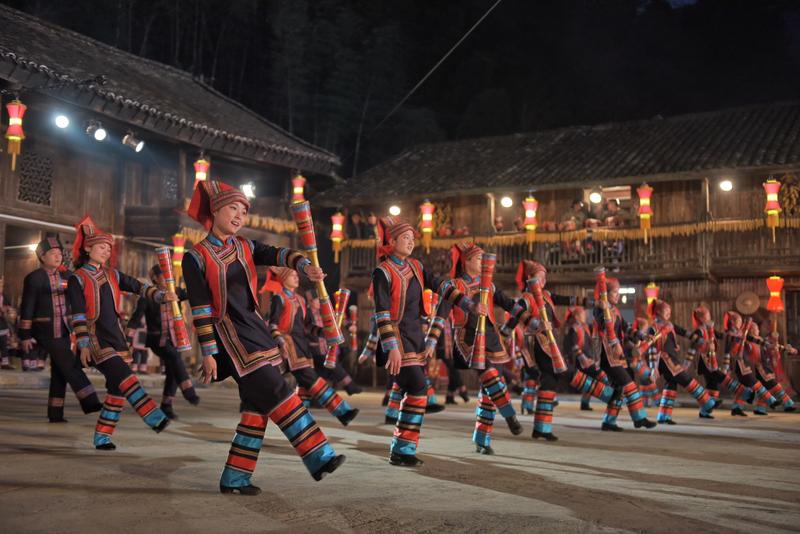 Members of the Yao ethnic group perform a dance in Yongzhou. (PHOTO PROVIDED TO CHINA DAILY)
Members of the Yao ethnic group perform a dance in Yongzhou. (PHOTO PROVIDED TO CHINA DAILY)
The completion rates of county-level libraries and cultural centers were 138 and 127 percent respectively.
In the past decade, Hunan has made progress in the protection, utilization and inheritance of cultural heritage, becoming one of the top 10 provinces famed for cultural relics in China, officials said.
The province has constructed five national archaeological site parks; 39 national-level historical and cultural towns and villages; and 658 traditional Chinese villages.
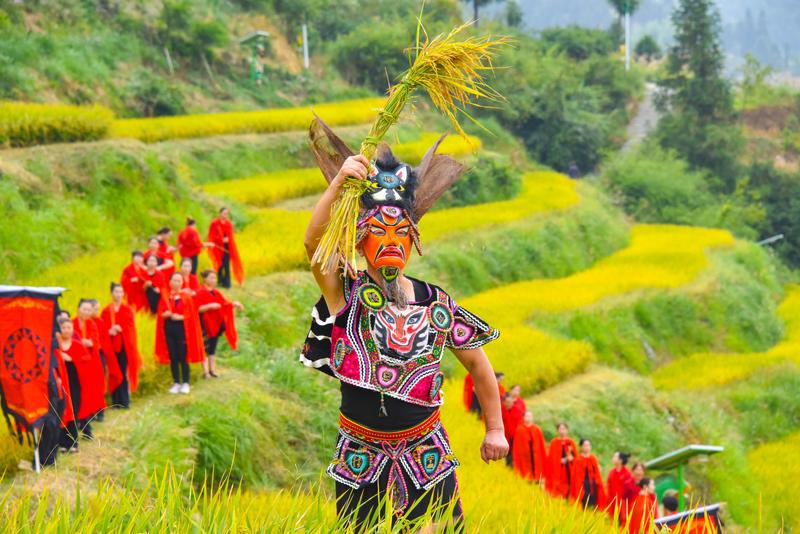 A man dressed in the costume of a local ethnic group performs in the Huayao terraced fields in Huaihua. (PHOTO PROVIDED TO CHINA DAILY)
A man dressed in the costume of a local ethnic group performs in the Huayao terraced fields in Huaihua. (PHOTO PROVIDED TO CHINA DAILY)
 Performers in traditional costumes cross a river at the Fenghuang Ancient Town scenic spot. (PHOTO PROVIDED TO CHINA DAILY)
Performers in traditional costumes cross a river at the Fenghuang Ancient Town scenic spot. (PHOTO PROVIDED TO CHINA DAILY)
In 2020, two historical sites in the province were selected as major archaeological discoveries by the Archaeological China TV program.
Leveraging its abundant resources, including the ancient towns of historical figures, the province has been digging into the potential to develop historical revolutionary sites, or Red tourism destinations.
At present, there are 310 Red tourism spots in Hunan, including 28 national-level classic spots and 57 national tourism spots rated at A level and above. In 2021, the number of such tourists in the province exceeded 140 million, up 25 percent year-on-year. The total revenue exceeded 130 billion yuan ($18 billion), up 28 percent year-on-year.
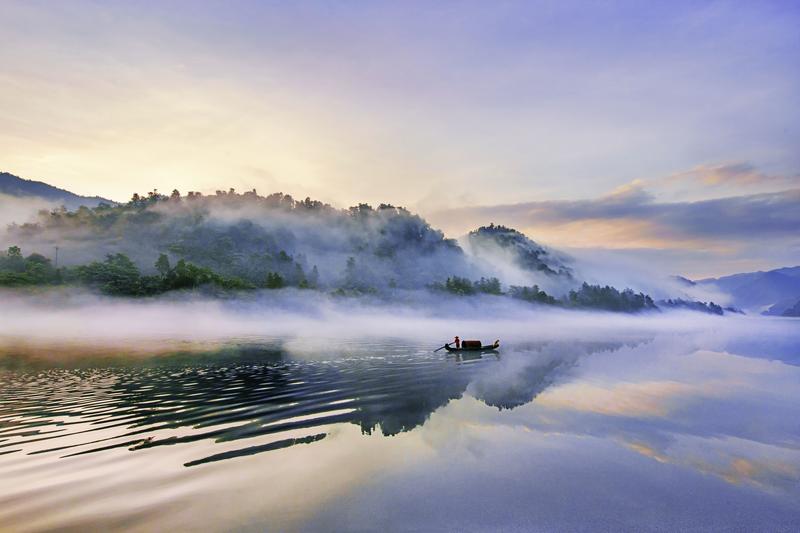 A boatman rows a traditional boat across Dongjiang Lake in Chenzhou. (CAO GUANGWEN / FOR CHINA DAILY)
A boatman rows a traditional boat across Dongjiang Lake in Chenzhou. (CAO GUANGWEN / FOR CHINA DAILY)
 A panoramic view of Orange Island in Xiangjiang River in Changsha. (PHOTO PROVIDED TO CHINA DAILY)
A panoramic view of Orange Island in Xiangjiang River in Changsha. (PHOTO PROVIDED TO CHINA DAILY)
By giving full play to the culture and tourism industry in poverty alleviation and rural revitalization, the province is investing in more signature tourism routes in areas such as in Wuling Mountain, Xuefeng Mountain and Luoxiao Mountain. The projects have been driving the development of 689 villages and generated 55 typical tourism poverty alleviation cases to display how “beauty conquers poverty”.
Zhu Youfang contributed to this story.


